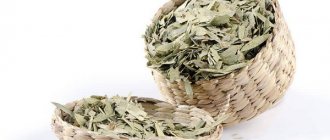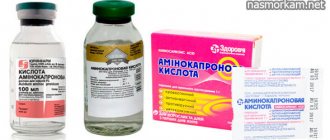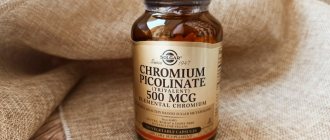There are several types of acids that are essential for the human body and are widely used by both cosmetologists and doctors. Ascorbine, nicotine, folic acid - these names are always heard, and everyone knows them well. But there are also some substances that are not so well known, and their invaluable health effects are difficult to assess. Lipoic acid is very popular for regulating metabolic processes in the body. This drug is beneficial for the metabolism of lipids, carbohydrates, and also helps control cholesterol levels. Therefore, it is used in the treatment of diabetes, liver cirrhosis, excess body weight, atherosclerosis, and is also widely used by people professionally involved in sports, as it is one of the safest supplements.
Alpha lipoic acid[edit | edit code]
| What is alpha lipoic acid (lipoic acid) | |
| Alpha lipoic acid (ALA) is produced in small quantities in the body and is found in red meat. It is also widely used in sports nutrition as an antioxidant from the group of organosulfur compounds. | |
| Action of alpha lipoic acid | |
| It may help neutralize cell damage caused by free radicals, as well as enhance the effectiveness of other antioxidants such as vitamins C, D and E, and the tripeptide glutathione. Animal and diabetic studies suggest it may help reduce insulin resistance—that is, act like insulin. Thus, the supplement can help diabetics control their blood sugar levels. | |
| Do you need alpha lipoic acid? | |
| Try to increase your antioxidant intake primarily by eating plenty of fresh fruits and vegetables, as well as whole grains, nuts and seeds. Antioxidant supplements can promote recovery after intense exercise and reduce cell damage. ALA is a common ingredient in well-known antioxidant supplements, so taking it alone may not be necessary. | |
| Side effects | |
| Diabetics should consult their doctor before taking ALA. It is not recommended for pregnant and breastfeeding women. |
Alpha lipoic acid
(English lipoic acid) - also known as
thioctic acid
- is a biologically active agent from the group of conditional vitamins. It is an important cofactor of pyruvate dehydrogenase and alpha-ketoglutarate dehydrogenase complexes. It has antioxidant properties and potentiates the action of insulin.
Food sources:
alpha lipoic acid is found in large quantities in kidneys (32 mg per 1 serving), heart (19 mg per 1 serving), liver (14 mg per 1 serving), spinach (5 mg per 1 serving), rice (11 mg per 1 serving). portions) and other products.
Alpha lipoic acid is conditionally essential for humans. The body is able to synthesize it only in those quantities that can prevent its deficiency. [1]
Mechanism of action of alpha lipoic acid[edit | edit code]
Alpha Lipoic Acid Content in Some Foods
Lipoic acid has several major physiological functions. [2] Alpha lipoic acid primarily acts as an antioxidant. [3] Reactive oxygen metabolites (ROM) or reactive oxygen agents (ROS) are products of oxidative metabolism that the body produces constantly. Excess free radicals lead to damage to DNA and mitochondria, inhibition of ATP production, aging and cell death. Alpha lipoic and dihydrolipoic acids serve as powerful antioxidants. Theoretically, they are able to protect cells from peroxidative damage, reducing the risk of developing diseases associated with the aggression of radicals, and also slow down the aging process. [4]
Secondly, alpha lipoic acid acts as a cofactor involved in mitochondrial metabolism. Under aerobic conditions, pyruvate enters the mitochondrion and, through a complex reaction of pyruvate dehydrogenase, is converted to acetyl-CoA for participation in the Krebs cycle. This reaction requires several coenzymes and cofactors, including alpha lipoic acid. The lack of alpha-lipoic acid is expressed in the reserving of pyruvate in the cytosol and its conversion to lactic acid. The anaerobic threshold is the limit after which lactic acid begins to accumulate in the blood. Because alpha lipoic acid serves as a cofactor in this set of reactions, its deficiency will reduce aerobic power, aerobic threshold, and available energy. Theoretically, increasing the amount of alpha-lipoic acid can increase the efficiency of converting pyruvate to acetyl-CoA, and thereby increase the amount of mediators of aerobic metabolism. For this reason, some scientists suggest that supplementation with alpha lipoic acid, B complex vitamins, and other cofactors involved in this complex reaction may raise aerobic threshold and improve aerobic metabolism.
Third, alpha lipoic acid may benefit people with diabetes. For them, there are several sources of oxidative stress, which is a precursor to a number of complications associated with diabetes (insulin resistance, neuropathy, kidney disease, etc.). Taking alpha lipoic acid as a dietary supplement has a beneficial effect on the course of the disease, reducing complications associated with radical aggression. In addition, alpha lipoic acid was found to reduce insulin resistance by improving the uptake of glucose into cells. [5]
ALC in clinical practice
ALA was first used for therapeutic purposes in 1966 in Germany for the treatment of patients with diabetic polyneuropathy and cirrhosis of the liver. The basis for this was data on low ALA levels in this category of patients [9]. In addition, in experimental models of diabetes, ALA was found to improve blood circulation and signal conduction along the nerve [11]. Over decades of use of ALA, numerous evidence has accumulated regarding the effectiveness of this drug against the symptoms of diabetic polyneuropathy [30]. At the same time, it was noted to be well tolerated.
ALA is the drug of choice for the treatment of diabetic neuropathy
Major evidence-based studies on the effectiveness and safety of ALA for the treatment of diabetic neuropathy were conducted in the 1990s. The first large study, ALADIN I-III [36], examined three different dosages of ALA. The ALADIN I study included 328 patients with type 2 diabetes mellitus. They received intravenous LA at doses of 1200 mg, 600 mg, 100 mg, or placebo for 3 weeks. Improvement in symptoms of 30% or more was observed in 71% of patients receiving 1200 mg ALA per day; in 82% of patients receiving 600 mg ALA per day; in 65% of patients receiving 100 mg ALA per day; in 58% of patients receiving placebo. The ALADIN II study analyzed the results of 65 patients who received two doses of ALA tablets (600 or 1200 mg per day) or placebo for over 2 years. There was strong evidence of clinical improvement in neuropathy symptoms. The main indicator of the severity of diabetic polyneuropathy was the Total Symptom Score (TSS), which allowed us to determine the intensity and frequency during the last 24 hours of the main positive neuropathic symptoms, such as shooting pain, burning, numbness and paresthesia. Based on these positive results, the ALADIN III trial was designed to test the hypothesis of the effectiveness of a short course of intravenous ALA followed by a long course of ALA tablets for the treatment of diabetic neuropathy [36]. In this study, patients received 600 or 1200 mg of ALA per day for 3 weeks, followed by a tablet form of 1800 mg per day for 6 months. The results obtained showed a steady trend towards a decrease in the severity of pain, without reaching a degree of statistical significance.
In the ORPIL study [15], in which patients with type 2 diabetes mellitus received ALA at a dose of 1800 mg per day, a significant improvement in endoneurial function was found after 3 weeks of treatment. The SYDNEY study [7, 36] demonstrated the effect of ALA on the sensory symptoms of diabetic polyneuropathy. It included patients with stable diabetes complicated by sensorimotor neuropathy. They were prescribed intravenous administration of 600 mg ALA or placebo 5 days a week, for a total of 14 infusions. After treatment, there was a significant (p<0.001) improvement in the TSS scale mentioned above. In addition to a rapid improvement in sensory symptoms, a reduction in the processes of degeneration of nerve fibers was observed. The authors concluded that ALA can be successfully used to treat sensory symptoms of diabetic polyneuropathy.
Cardiovascular autonomic neuropathy, which is found in 25% of patients, is also known to be a severe complication of diabetes. This neuropathy is characterized by a reduction in cardiovascular rate variability (HR) and is associated with an increased risk of mortality in patients with diabetes. Of great interest in this regard is the DEKAN study [35], which assessed the effectiveness of a 4-month course of ALA at a dose of 800 mg per day. An improvement in heart rate variability was found compared to placebo. There has also been evidence of the benefit of long-term oral ALA for the treatment of both diabetic sensorimotor neuropathy (600-1800 mg per day) and cardiac autonomic neuropathy (800 mg per day). In addition, the effectiveness of a combined course (600 mg per day intravenously for 10 days followed by taking a tablet form of 600 mg per day for 50 days) was established in patients with various forms of autonomic neuropathy [35]. At the same time, there was a regression of symptoms of diabetic enteropathy, a decrease in complaints of dizziness and (or) instability in a standing position, and an improvement in sexual function. The data obtained allowed the authors to conclude that ALA is effective in the treatment of various forms of diabetic autonomic neuropathy.
In 2004, data from a meta-analysis of randomized placebo-controlled trials ALADIN I, ALADIN III, SYDNEY and NATHAN II, which included over 1000 patients, were published [38]. Convincing data were obtained that after 3 weeks of intravenous administration of ALA at a dose of 600 mg, a positive effect was observed in more than 50% of patients. It was noted that improvement was observed both in terms of positive neuropathic symptoms and neurological deficits.
A daily dose of 600 mg in tablet form showed the optimal balance of safety and effectiveness [39] (SYDNEY II study), while using a daily dose of 1200 mg, moderate nausea occurred in 21% of patients, which is higher than in the ALADIN I clinical trial (15%) and ALADIN II (7%), in which the dose was similar.
Post-marketing observations confirmed the highly safe profile of ALA [37].
The results of the clinical studies made it possible to formulate an algorithm for the treatment of diabetic patients with diabetic polyneuropathy with intravenous administration of ALA. Treatment begins with intravenous administration of ALA in a single dose of 600 mg for 14-15 days. Subsequently, tablet forms are used.
Russian neurologists and endocrinologists, who have domestic and foreign injectable and tablet ALA preparations, have also accumulated extensive clinical experience in the use of ALA for diabetic neuropathy. Among the domestically produced drugs, the drug thiolepta stands out, effective against diabetic and alcoholic neuropathy [5]. A corresponding comparative study [2] showed that the use of thiolepta at a dose of 600 mg per day (2 tablets of 300 mg once) for 2 months, in addition to basic therapy that maintains euglycemia, provides a more pronounced tendency to regression of symptoms of diabetic polyneuropathy compared with patients receiving only basic therapy: by the end of treatment, the severity of symptoms of diabetic polyneuropathy was less in the main group of patients compared to the control group; there was also a disappearance of neurological symptoms according to the TSS scale in 30% of patients (in the control group, neurological symptoms persisted); An electroneuromyographic study revealed a statistically insignificant (p>0.05) tendency towards a more pronounced increase in the speed of impulse conduction along the sensory and motor nerves, as well as the amplitudes of motor and sensory responses in the main group.
Additional possibilities for using ALA
From the above it is clear that the main indication for the use of ALA is diabetes mellitus and complications associated with impaired glucose metabolism, including not only neuropathy, but also cataracts. Additionally, it can be noted that ALA helps reduce the dependence of diabetic patients on insulin.
Due to its properties, ALA can be used for medicinal purposes and for a number of other diseases. From the data we present below, it is clear that for some diseases certain therapeutic results have already been obtained, while for others only the prerequisites for the use of ALA are still being considered.
ALC and compression ischemic radiculopathy
In animal models (compression of the rat sciatic nerve), the protective effect of ALA in reducing oxidative stress in traumatic damage to the nerve fiber has been proven [32]. These data may provide a basis for the use of ALA in the treatment of back pain associated with radiculopathy. The most common cause of radiculopathy and radicular pain is lumbar intervertebral disc herniation. Damage to the nerve fiber depends on the duration of the compression. A sequential pattern of axonal degeneration and myelin degradation and subsequent rapid regeneration is characteristic of peripheral nerve injury. An undeniable fact is that free radical levels increase after tissue damage. Increased production of free radicals under conditions of ineffective balance of cellular antioxidant systems leads to additional direct damage to cell membrane phospholipids, mitochondria, and cellular proteins. Superoxide dismutase is one of the protective systems that protects cells from damage associated with exposure to free radicals. Superoxide dismutase belongs to the family of metatalloproteinases. It catalyzes the dismutation of free radicals, the end products of which are water and hydrogen peroxide, the latter being neutralized due to the activity of catalase. An experimental model of damaged nerve fiber showed an increase in the activity of superoxide dismutase and catalase, which may be a response that levels oxidative stress. Despite the lack of complete understanding of the subtle mechanisms of nerve fiber damage, the evidence available to date is sufficient to suggest that ALA may enhance the antioxidant protection of damaged fibers.
Recent studies by M. Ranieri et al. [27] showed the effectiveness of ALC against such clinical symptoms as pain, paresthesia, hypoesthesia in patients with compressive radiculopathy due to disc-radicular conflict. These authors found the beneficial effects of ALA when evaluating the effectiveness of the adjunctive use of a combination of ALA and gamma-linolenic acid in a 6-week rehabilitation program in patients with discogenic radiculopathy compared with a similar group of patients treated only as part of a rehabilitation program. Additional benefits of antioxidant therapy have been demonstrated not only in terms of pain reduction, but also in associated functional impairment, assessed on a number of well-known scales, including improvement in quality of life [17].
ALA and alcoholic neuropathy
. Antioxidant therapy is considered as one of the possible ways to treat the toxic effects of alcohol on the nervous system. Although there are a lot of publications on the proven therapeutic effect of ALC in diabetic polyneuropathy, studies on the effectiveness of ALC in alcoholic polyneuropathy (AP) are still rare.
I.A. Sklar et al. [4] found that ALC is effective in 70% of patients with AP; it affects sensory and motor symptoms and also has a positive effect on painful and paresthetic manifestations of AP that are painful for patients. E.A. Kovrazhkina et al. [3], when analyzing the effectiveness and tolerability of ALA in AP in comparison with thiamine, found that ALA was significantly more effective than vitamin B1 in both clinical and electrophysiological parameters.
Treatment of ALA for AP can be considered etiotropic, since the drug affects one of the main etiological factors in the formation of polyneuropathy in chronic alcoholism - oxidative stress. In addition, there is evidence [26] of a direct effective effect of ALA on ethanol-mediated neurotoxicity in vivo
.
ALC and vibration disease
. The main symptoms of vibration disease include vascular disorders, manifested by disturbances of peripheral circulation, changes in capillary tone, disruption of general hemodynamics, as well as the development of autonomic-sensory polyneuropathy of the extremities. In this case, ischemia of the endoneurium triggers oxidative stress processes, which play an important role in damage to the nerve fiber. All this is a sufficient basis for the use of antioxidant therapy, in particular ALA, for the treatment of vibration disease.
The corresponding study was carried out by V.G. Artamonova and E.L. Lashina [1]: thiolept was used in a comparative open randomized study at a dose of 600 mg per day (course duration 21 days) for the treatment of vibration disease with autonomic-sensory polyneuropathy. The additional introduction of thiolepta into therapy led to a decrease in the frequency of subjective complaints of patients, a persistent decrease in relapses of pain in the extremities, and a decrease in the frequency of vasospasm attacks. In the group of patients receiving thiolept, there was a significant positive dynamics (p<0.05) of electrophysiological parameters testing the state of the nerve fiber. After treatment, an increase in the speed of propagation of excitation along motor and sensory fibers was observed.
ALA and immunodeficiency virus
.
There are certain experimental grounds for the use of ALA drugs in HIV-infected individuals. For example, it has been shown that ALA significantly (30-70%) increases glutathione in HIV-infected people. This may be important for hepatocyte recovery, since the immunodeficiency virus induces glutathione deficiency [13]. Moreover, ALA inhibits viral replication during acute and chronic periods of cell infection. In vitro
, ALA exhibits a synergistic antiviral effect with azathiaprine. This combination results in stronger inhibition of viral replication than either drug alone [8]. Separate studies have shown that ALA reduces the activity and invasive ability of the HIV gene.
ALA and skin aging
. There are suggestions [24] that ALA can promote the elimination of damaged collagen and have a preventive effect on the processes of protein glycolysis, which prevent premature aging and skin damage (23). Clinically, ALA has advantages over vitamins C and E for symptoms such as improved skin color, tone, and texture. It is no coincidence that ALA is traditionally included in creams whose action is aimed at improving skin texture and reducing pores and wrinkles.
ALA and the cardiovascular system
. Oxidation of low-density lipoproteins (LDL) with the formation of free radicals contributes to the deposition of cholesterol in the arterial wall, which is associated with atherosclerosis. Since 1992, studies have been published demonstrating the synergistic effect of ALA with vitamins C and E against free radical oxidation of LDL. Clinical studies confirm the ability of ALA to reduce ischemia and reperfusion damage to the heart muscle and brain [10].
ALA and treatment of multiple sclerosis
. Many researchers believe that oxidative damage may play a large role in the pathogenesis of multiple sclerosis. Using a model of experimental autoimmune encephalomyelitis in mice, the effectiveness of ALA was proven in reducing the clinical symptoms of encephalomyelitis (effectiveness between 23 and 100%), reducing inflammatory processes, demyelination and loss of axons in the spinal cord. It is assumed that the effectiveness of ALA is associated with inhibition of lymphocyte transport across the blood-brain barrier and, possibly, with inhibition of metalloproteinases [18]. However, consideration of ALA as a potential drug for the treatment of multiple sclerosis still needs to be explored.
Possibilities of ALA for the treatment of olfactory impairment
. Usually, a violation of the sense of smell is associated with an infection of the upper respiratory tract.
One study [14] found an improvement in post-viral olfactory dysfunction under the influence of a course (4.5 months) of ALA at a dose of 600 mg per day in approximately 60% of patients.
Chronic fatigue syndrome
. When considering the causes of chronic fatigue syndrome, some researchers suggest a possible role for changes in free radical levels. This naturally suggests the possibility of using antioxidant therapy. Such a study was conducted by Canadian clinicians who established the positive effect of ALA and other antioxidants in the treatment of the syndrome in question [17].
Potential of ALA in the prevention of drug toxicity
. Neuropathy can be a dose-limited side effect of drugs used in the treatment of life-threatening conditions such as cancer and HIV infection. We are talking primarily about cytostatics, which often cause axonal sensorimotor neuropathy, or, less commonly, damage to small fibers in some patients [23]. Cytostatic drug-induced neuropathy can be acute or chronic. Symptoms of acute neuropathy appear during or a short period after a course of therapy with drugs containing platinum. Chronic neuropathy can occur weeks or months after chemotherapy. The prognosis of drug-induced neuropathies is poor, and in some patients the symptoms remain irreversible. Some antiviral drugs may also cause sensory neuropathy.
Recently, publications have appeared on the beneficial effect of ALA in neuropathies induced by cytostatics. Thus, C. Gedlicka et al. [12] patients with cytostatic-induced neuropathy were prescribed during the next course of ALC at a dose of 600 mg intravenously for 3-5 weeks, and then 1800 mg in tablet form until the symptoms of neuropathy resolved, for a maximum of 6 months. The average duration of treatment was 2 months. Improvement in neuropathy symptoms was observed after an average of 4 weeks of treatment. The authors conclude that the preventive use of ALA in combination with cytostatics is useful for the treatment and prevention of damage to the peripheral nervous system. The benefits of preventive use of the tablet form of ALA (1800 mg per day, three times a day) for at least 24 weeks were confirmed in a special randomized trial [25]. A positive effect of ALC has been established [6] in reducing the risk of cardiotoxicity of cytostatics: for example, taking ALA 5 days before and 2 days after doxybicin injection leads to a clinically significant reduction in plasma creatine phosphokinase and lactate dehydrogenase.
Alpha lipoic acid and bodybuilding[edit | edit code]
Alpha lipoic acid may be beneficial in bodybuilding because intense training stimulates the formation of free radicals, increasing oxidative stress in muscle fibers. Taking antioxidants such as alpha lipoic acid reduces oxidation rates. [6] Thus, the effect of exercise on the formation of free radicals is weakened, and the destruction of proteins and cells is inhibited. In theory, this could allow athletes to train harder with less damage to muscle and other fibers, and to recover faster after training.
In addition, alpha lipoic acid has insulin-like properties, improving glucose uptake into muscles. [7] Thus, glycogen storage processes are stimulated, the amount of glucose in the muscles increases during exercise, and stable blood glucose levels are maintained. In addition, it is very interesting whether consuming alpha-lipoic acid with other nutrients (for example, creatine) can speed up insulin-related absorption processes in muscles. And third, there is evidence that alpha lipoic acid can promote breakdown in mitochondria. This means that the electronic transport system becomes less efficient as a result of increased heat production. This scenario may not be ideal for endurance athletes, but may be an effective way to enhance thermogenesis and increase energy expenditure in a similar manner to decoupled polymers such as UCP-1. In other words, alpha lipoic acid can serve as a powerful fat burner.
Benefits and harms
When used correctly and regularly, lipoic acid brings only benefits. Harm is possible only if the instructions are not followed. The valuable properties of the component lie in the following:
- Reducing and controlling blood sugar levels.
- Participation in most biochemical processes in the body: synthesis of carbohydrates, proteins, fats, hormones.
- Improved metabolism.
- Normalization of the thyroid and thymus glands.
- Acceleration of recovery after poisoning.
- Regulation of the nervous system.
- Normalization of the emotional background.
- Reducing cholesterol.
Another thing why women need lipoic acid is its cosmetic properties. It is used for the face, helps rejuvenate and refresh the skin, tighten pores, and treat acne.
A negative effect of a component is possible only in case of incorrect dosage and combination with other inappropriate agents. In some cases, the following side effects occur:
- muscle cramps;
- digestive disorders;
- increased blood pressure;
- allergic reactions.
Lipoic acid preparations should not be given to children under 7-8 years of age. They are also not recommended for pregnant women.
An overdose of the drug can provoke the following consequences:
- nausea, diarrhea, aching pain in the stomach;
- rash and itchy skin;
- prolonged headache;
- metallic taste in the mouth;
- dizziness, convulsions;
- increased blood pressure.
If such signs appear, you need to complete the course and consult a doctor.
Alpha lipoic acid and training[edit | edit code]
A number of studies have examined the effects of alpha lipoic acid supplementation on markers of oxidative stress and muscle damage. In most cases, oxidative stress was alleviated. However, there is much less data on the effects of alpha lipoic acid on the training itself. Several studies have recently been published on the effects of alpha-lipoic acid on markers of oxidative stress in rats. [8] For example, Saengsirisuwan and colleagues reported that the use of alpha-lipoic acid in combination with exercise improved insulin levels in insulin-resistant obese rats. However, in the same experiment, but with lean, insulin-sensitive rodents, similar results were not obtained.
Although most research on the properties of alpha-lipoic acid has been carried out on animals, an experiment has also been conducted on humans, during which a mixture of antioxidants (including alpha-lipoic acid) was used. Schmidt et al[9] studied the effects of a mixture of antioxidants on a group of sailors who trained in cold weather for 24 days. The mixture included vitamin E, beta-carotene, ascorbic acid, selenium, alpha-lipoic acid, N-acetyl l-cysteine, catechin, lutein and lycopene. Indicators of oxidative stress were assessed. Both the experimental and control groups (placebo) showed high levels of oxidative stress after 24 days of training. There were no significant differences in oxidative stress levels between both groups.
However, an independent study conducted by Petersen Shay in 2008 confirmed that alpha lipoic acid has an antioxidant effect in humans and also inhibits aging due to the modulation and transduction of gene transcription signals, and therefore improves the antioxidant status of the cell. [10]
Summary[edit | edit code]
Alpha lipoic acid has antioxidant properties, inhibits the aging of the body and increases insulin consumption by tissues. Theoretically, athletes and bodybuilders may benefit from consuming alpha lipoic acid as a dietary supplement by reducing oxidative stress and regulating glucose metabolism. However, we can say with confidence that alpha-lipoic acid does not have a pronounced anabolic effect, that is, it does not contribute to muscle growth.
Indications for use
One of the main areas for which lipoic acid is used is the fight against damage to nerve fibers, in particular in diabetic neuropathy. Other indications for its use are:
- diabetes;
- liver dysfunction;
- atherosclerosis;
- Alzheimer's disease;
- severe visual impairment;
- multiple sclerosis;
- poisoning of various nature;
- nerve damage;
- deterioration of memory and concentration;
- alcohol addiction;
- oncology.
The benefits of the substance for weight loss, muscle growth, and slowing down aging are also known. Scientists believe that acid helps in recovery from radiation injuries, alleviates the condition of HIV-infected people and reduces the negative effects of radiation.
Sports nutrition with alpha lipoic acid[edit | edit code]
- Opti-Men by Optimum Nutrition
- Cell-Tech Hardcore Pro Series by MuscleTech
- Opti-Women by Optimum Nutrition
- Cheaters Relief by BSN
- Aplodan by Muscletech
- TestostroGrow 2 HP from Ultimate Nutrition
Dosage regimen[edit | edit code]
Doses of alpha lipoic acid vary widely: from 50 to 400 mg per day.
For medicinal purposes (diabetes mellitus and its complications), alpha-lipoic acid is taken from 600 to 1800 mg per day. Take 30 minutes before meals.
Side effects[edit | edit code]
Alpha lipoic acid has virtually no side effects. In rare cases, allergic reactions, heaviness in the head, and changes in taste are possible. Much more often side effects develop after intravenous administration of the drug. In case of overdose, digestive upset, nausea, vomiting, headache, etc. may occur.
Due to the combination with metals (formation of complex compounds), it is not prescribed to patients taking cisplatin, iron-containing drugs, magnesium, calcium. It is not recommended to combine with alcohol.
Side effects
In some situations, the occurrence of headaches and allergies cannot be ruled out.
Similar symptoms may appear as the indicated dose increases. If any of these symptoms occur, you should quickly stop taking LC and visit a doctor.
Thus, before using the medicine you need to carefully read the instructions. It is worth buying alpha acid from trusted manufacturers. It is best to rely on stores that specialize in nutrition for athletes.
Links[edit | edit code]
- Bilska, A., L. Wlodek. . Postepy Hig Med Dosw 56:201-219, 2002.
- Packer, L, K. Kraemer, G. Rimbach. Molecular aspects of lipoic acid in the prevention of diabetes complications. Nutrition 17:888-895, 2001.
- Shapiro, K., W. C Gong. Natural products used for diabetes. J Am Pharm Assoc (Wash) 42:217–226, 2002.
- Miquel, J. Can antioxidant diet supplementation protect against age-related mitochondrial damage? Ann NY Acad Sci 959:508-516, 2002.
- Sytze Van Dam, P. Oxidative stress and diabetic neuropathy: pathophysiological mechanisms and treatment perspectives. Diabetes Metab Res Rev 18:176-184, 2002.
- Sen, S. K. Update on thiol status and supplements in physical exercise. Can J Appl Physiol 26 Suppl:S4-12, 2001.
- Greene, E.L., B.A. Nelson, K.A. Robinson, M.G. Buse. alpha-Lipoic acid prevents the development of glucose-induced insulin resistance in 3T3-L1 adipocytes and accelerates the decline in immunoreactive insulin during cell incubation. Metabolism 50:1063–1069, 2001.
- Khanna, S., M. Atalay, D. E. Laaksonen, M. Gul, S. Roy, S. K. Sen. Alpha-lipoic acid supplementation: tissue glutathione homeostj at rest and after exercise. J Appl Physiol 86:1191–1196, 1999.
- Schmidt, M. C, E. W. Askew, D. E. Roberts, R. L. Prior, W. Ensign, Jr., R. E. Hesslink, Jr. Oxidative stress in humans training in a cold, moderate altitude environment and their response to a phytochemical antioxidant supplement. Wilderness Environ Med 13:94-105, 2002
- Petersen Shay K, Moreau RF, Smith EJ, Hagen TM. Is alpha-lipoic acid a scavenger of reactive oxygen species in vivo? Evidence for its initiation of stress signaling pathways that promote endogenous antioxidant capacity. IUBMB Life. 2008 Jun;60(6):362-7. Review. PMID: 18409172








